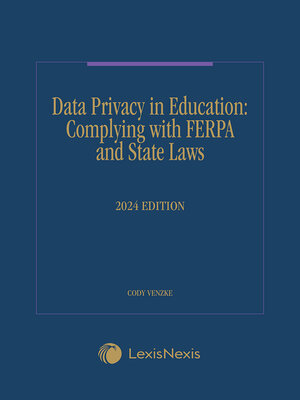
Sign up to save your library
With an OverDrive account, you can save your favorite libraries for at-a-glance information about availability. Find out more about OverDrive accounts.
Find this title in Libby, the library reading app by OverDrive.



Search for a digital library with this title
Title found at these libraries:
| Loading... |
No one can deny the increasing importance of data in education over the last quarter century. Although the COVID-19 pandemic underscored the critical role of technology in education, education professionals have long used student data to assess students' progress and needs, measure school effectiveness, connect students with key services and benefits, and ensure that the school environment is safe and healthy. The importance of student data to the many functions of schools and educational institutions means that it must be allowed to both flow among service providers for students and be protected.
This publication is designed for legal professionals working closely with schools and other educational institutions. Thus, it is organized around the many functions that schools must fulfil, including teaching and learning, nutrition, protecting children's health and safety, connecting student with employment and educational opportunities, conducting educational research, and reporting to other governmental institutions. Functional areas include:
Within each functional area, this publication:
This publication recognizes that neither FERPA alone nor federal laws generally are the sole, or even the primary, laws governing education. Thus, the publication includes an analysis of student privacy laws for all U.S. states, including the District of Columbia.






